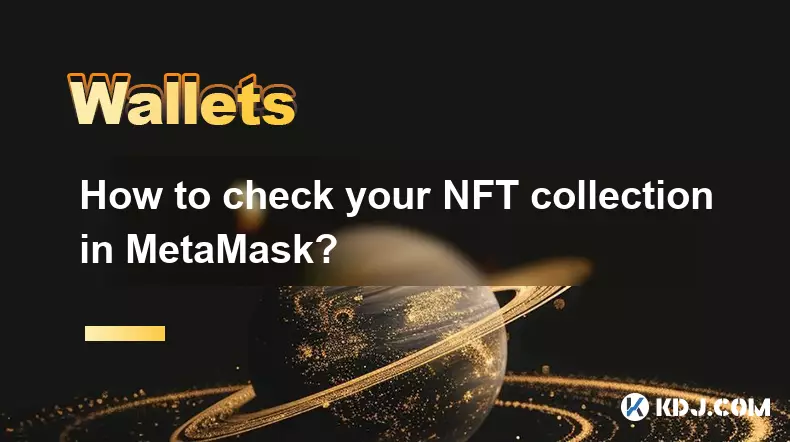-
 bitcoin
bitcoin $102877.190955 USD
1.88% -
 ethereum
ethereum $3430.435064 USD
4.52% -
 tether
tether $0.999264 USD
-0.05% -
 xrp
xrp $2.307310 USD
4.49% -
 bnb
bnb $987.740692 USD
3.82% -
 solana
solana $161.947760 USD
3.97% -
 usd-coin
usd-coin $0.999712 USD
-0.05% -
 tron
tron $0.292810 USD
2.93% -
 dogecoin
dogecoin $0.179738 USD
10.70% -
 cardano
cardano $0.580716 USD
8.75% -
 hyperliquid
hyperliquid $42.463448 USD
8.40% -
 chainlink
chainlink $15.763437 USD
7.05% -
 zcash
zcash $649.595636 USD
17.21% -
 bitcoin-cash
bitcoin-cash $511.610261 USD
7.19% -
 stellar
stellar $0.292537 USD
7.91%
How to export my transaction history from a Trezor Model T for taxes?
Export your Trezor Model T transaction history for taxes by using Trezor Suite, blockchain explorers, and trusted crypto tax tools like Koinly or CoinTracker.
Oct 30, 2025 at 05:36 pm

Exporting Transaction History from Trezor Model T for Tax Reporting
Managing cryptocurrency taxes requires accurate records of all transactions. The Trezor Model T is a secure hardware wallet, but it does not store full transaction histories on its interface. Instead, users must leverage external tools and blockchain explorers to compile necessary data for tax reporting.
Access Your Wallet via Trezor Suite
1. Connect your Trezor Model T to your computer using the USB cable.2. Open the official Trezor Suite application at suite.trezor.io in a supported browser.
3. Unlock your device by entering your PIN and confirming access.
4. Navigate to the account dashboard where your balances and recent activity are displayed.
5. Select the specific cryptocurrency account (e.g., Bitcoin, Ethereum) for which you need transaction history.
Retrieve On-Chain Data Using Blockchain Explorers
6. Copy the public address of your wallet from Trezor Suite.7. Visit a blockchain explorer such as blockstream.info for Bitcoin or etherscan.io for Ethereum.
8. Paste your public address into the search bar and press enter.
9. Review the complete list of incoming, outgoing, and internal transactions linked to that address.
10. Note down critical details including date, amount, fees, counterparty addresses, and transaction IDs.
Use Third-Party Crypto Tax Software
11. Sign up for a reputable crypto tax platform like Koinly, CoinTracker, or CryptoTaxCalculator.12. Create a new wallet connection and select “Trezor” or “Import via Address” depending on the service.
13. Enter your public wallet addresses one by one to allow the software to sync on-chain data.
14. Allow time for the platform to scan and index all historical transactions across multiple blockchains.
15. Verify the accuracy of imported data by cross-referencing with Trezor Suite and blockchain explorers.
Generate and Export Tax Reports
16. Once all transactions are verified, navigate to the reporting section of the tax tool.17. Select your country’s tax authority guidelines (e.g., IRS Form 8949 for the United States).
18. Generate reports detailing capital gains, losses, income events, and disposals.
19. Export the final report in PDF or CSV format for submission or recordkeeping.
20. Store the exported files securely alongside your wallet recovery seed and transaction logs.
Frequently Asked Questions
Can I export transaction history directly from the Trezor device?
No, the Trezor Model T does not support direct export of transaction history. It functions as a secure signing device and does not store full blockchain data. You must use Trezor Suite in combination with blockchain explorers or tax platforms to retrieve transaction records.
Is it safe to input my public address into third-party tax software?
Yes, entering your public address is safe because it is designed to be shared. Public addresses do not expose private keys or compromise wallet security. However, only use trusted tax platforms with strong privacy policies and avoid sharing sensitive information like recovery phrases.
Do I need to report every transaction even if I didn’t sell?
Tax authorities often require reporting of all taxable events, which may include selling, trading, spending, or earning crypto through staking or rewards. Simply holding cryptocurrency without disposal may not trigger a tax event, but maintaining full records ensures compliance during audits.
What if my Trezor was used across multiple exchanges or wallets?
If you've transferred funds between your Trezor and other wallets or exchanges, ensure each movement is documented. Use consistent labeling in tax software to distinguish between personal wallets and exchange accounts. Accurate mapping of inflows and outflows prevents misreporting gains or losses.
Disclaimer:info@kdj.com
The information provided is not trading advice. kdj.com does not assume any responsibility for any investments made based on the information provided in this article. Cryptocurrencies are highly volatile and it is highly recommended that you invest with caution after thorough research!
If you believe that the content used on this website infringes your copyright, please contact us immediately (info@kdj.com) and we will delete it promptly.
- Ripple (XRP) in 2026: Hold or Fold? A Look at XRP's Future and Emerging DeFi Alternatives
- 2025-11-08 18:35:01
- Zcash ZEC Coin Price Explosion: From Privacy Niche to Center Stage
- 2025-11-08 18:55:01
- Berachain Price Prediction: Navigating the Honeycomb Hype in Crypto
- 2025-11-08 18:55:01
- Arthur Hayes, Gold, and Bitcoin: A Modern Monetary Trinity?
- 2025-11-08 19:15:01
- Shiba Inu's Next Move: Navigating a Shifting Market
- 2025-11-08 19:20:01
- Pakistan's Crypto Crossroads: Balancing Opportunity with Asset-Backed Realities
- 2025-11-08 19:20:01
Related knowledge

How to use MetaMask Portfolio to track assets?
Nov 08,2025 at 05:40am
Getting Started with MetaMask Portfolio1. Download and install the MetaMask mobile app from the App Store or Google Play. Open the app and select 'Imp...

How to check your NFT collection in MetaMask?
Nov 06,2025 at 08:20pm
Accessing Your NFTs in MetaMask Wallet1. Open the MetaMask browser extension or mobile app and ensure you are logged into your wallet account. Once in...

Why is the MetaMask swap feature failing?
Nov 06,2025 at 09:20pm
Understanding MetaMask Swap FailuresMetaMask, one of the most widely used cryptocurrency wallets, enables users to swap tokens directly within the int...

How to update the MetaMask extension in Chrome?
Nov 08,2025 at 07:39am
Updating the MetaMask extension in Chrome is a simple process that ensures you have access to the latest security features, performance improvements, ...

How to import an account into MetaMask using a private key?
Nov 07,2025 at 07:40am
Importing an Account into MetaMask with a Private KeyMetaMask is one of the most widely used cryptocurrency wallets, particularly within decentralized...

What to do if my MetaMask wallet was compromised?
Nov 06,2025 at 04:59pm
Immediate Steps to Take After a Compromised MetaMask Wallet1. Disconnect your device from any phishing websites immediately. If you clicked on a suspi...

How to use MetaMask Portfolio to track assets?
Nov 08,2025 at 05:40am
Getting Started with MetaMask Portfolio1. Download and install the MetaMask mobile app from the App Store or Google Play. Open the app and select 'Imp...

How to check your NFT collection in MetaMask?
Nov 06,2025 at 08:20pm
Accessing Your NFTs in MetaMask Wallet1. Open the MetaMask browser extension or mobile app and ensure you are logged into your wallet account. Once in...

Why is the MetaMask swap feature failing?
Nov 06,2025 at 09:20pm
Understanding MetaMask Swap FailuresMetaMask, one of the most widely used cryptocurrency wallets, enables users to swap tokens directly within the int...

How to update the MetaMask extension in Chrome?
Nov 08,2025 at 07:39am
Updating the MetaMask extension in Chrome is a simple process that ensures you have access to the latest security features, performance improvements, ...

How to import an account into MetaMask using a private key?
Nov 07,2025 at 07:40am
Importing an Account into MetaMask with a Private KeyMetaMask is one of the most widely used cryptocurrency wallets, particularly within decentralized...

What to do if my MetaMask wallet was compromised?
Nov 06,2025 at 04:59pm
Immediate Steps to Take After a Compromised MetaMask Wallet1. Disconnect your device from any phishing websites immediately. If you clicked on a suspi...
See all articles





















![The Graph Price Prediction [GRT Crypto Price News Today] The Graph Price Prediction [GRT Crypto Price News Today]](/uploads/2025/11/07/cryptocurrencies-news/videos/690d4df44fe69_image_500_375.webp)



















































